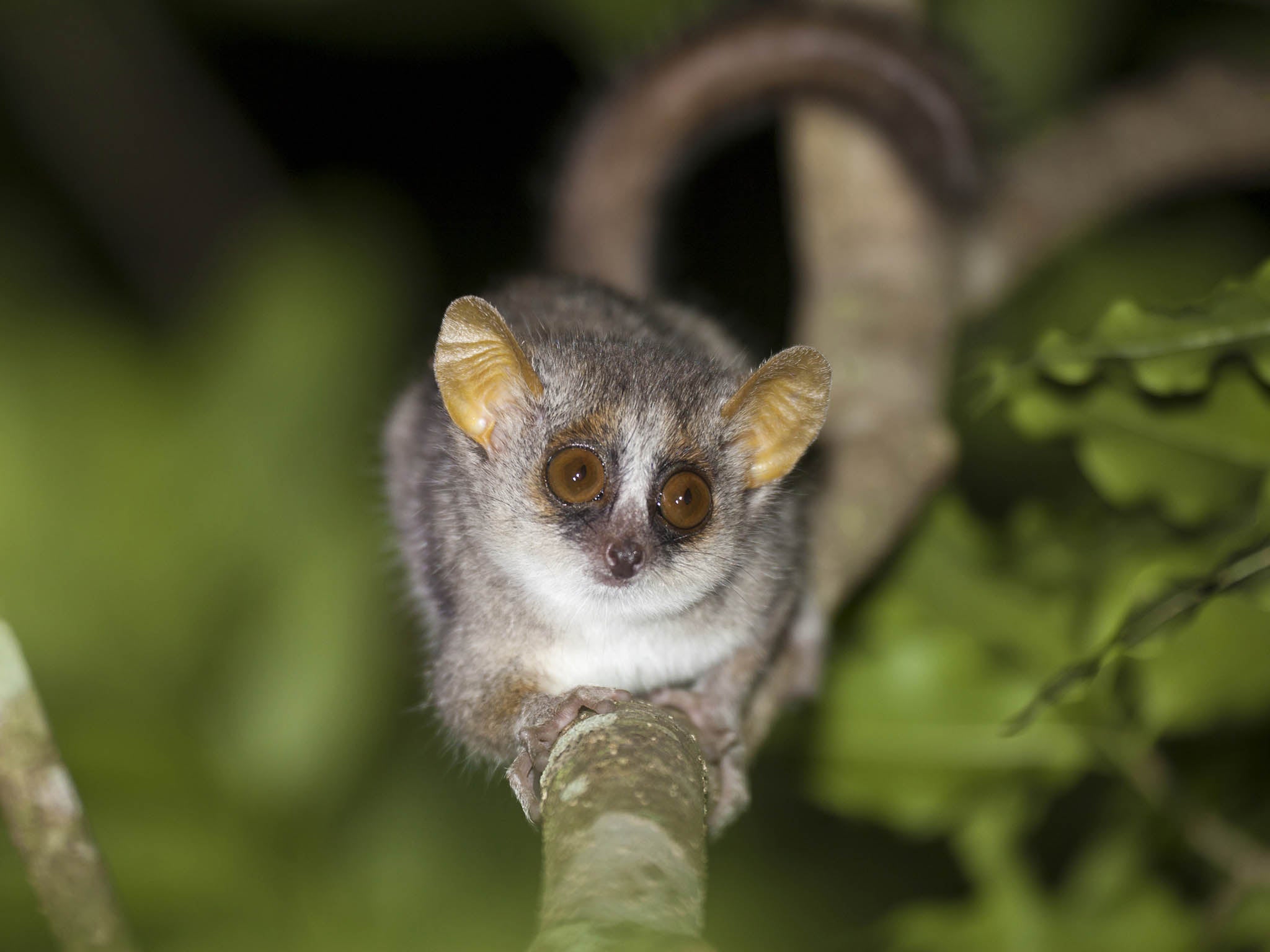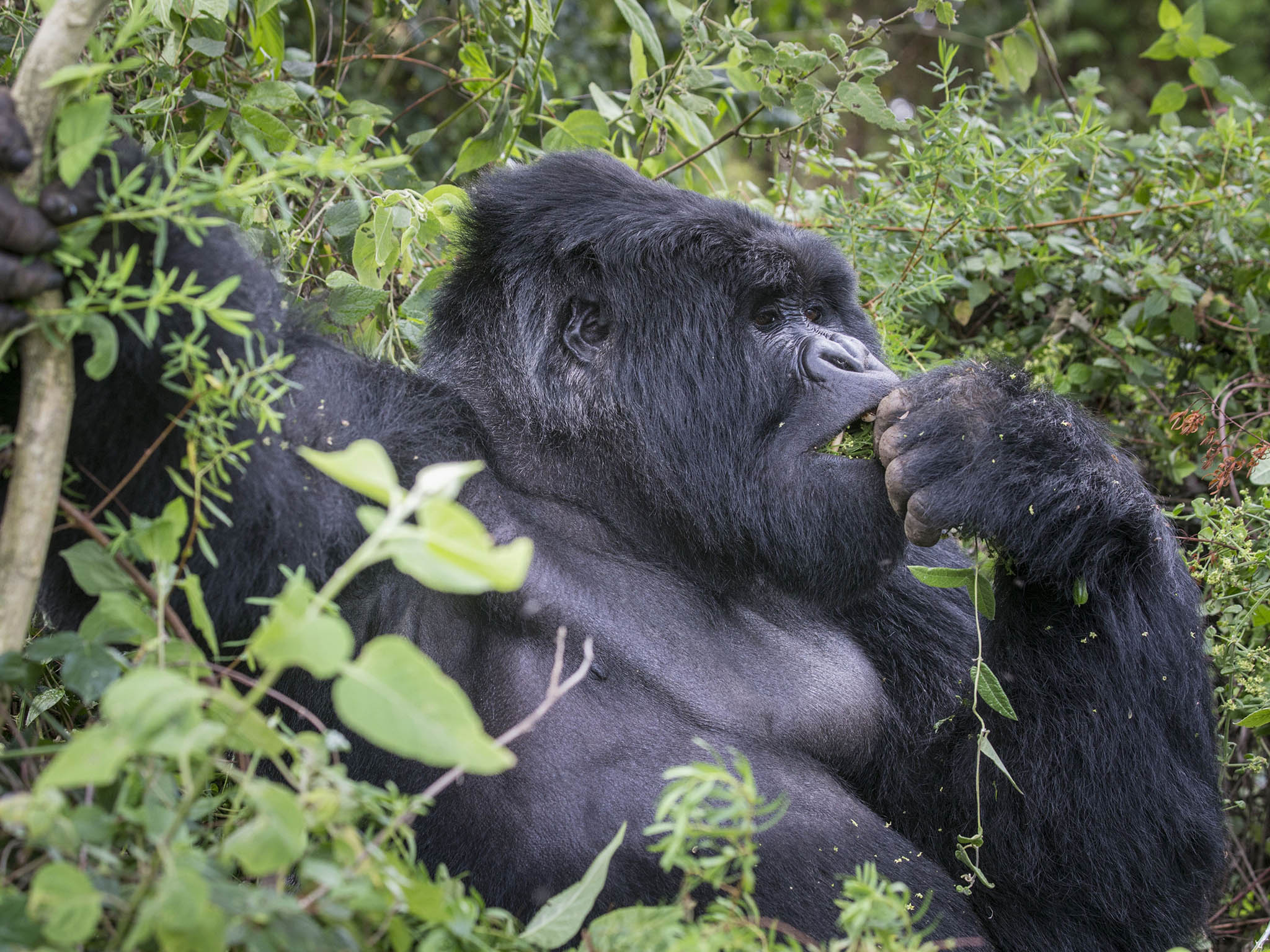Dawn of ‘Trumpocene’ era spells disaster for world’s primates
As Donald Trump prepares to enter the White House, there may be dark days ahead for some of the world’s rarest and most beautiful primates

Your support helps us to tell the story
From reproductive rights to climate change to Big Tech, The Independent is on the ground when the story is developing. Whether it's investigating the financials of Elon Musk's pro-Trump PAC or producing our latest documentary, 'The A Word', which shines a light on the American women fighting for reproductive rights, we know how important it is to parse out the facts from the messaging.
At such a critical moment in US history, we need reporters on the ground. Your donation allows us to keep sending journalists to speak to both sides of the story.
The Independent is trusted by Americans across the entire political spectrum. And unlike many other quality news outlets, we choose not to lock Americans out of our reporting and analysis with paywalls. We believe quality journalism should be available to everyone, paid for by those who can afford it.
Your support makes all the difference.Eight years ago, in the middle of the night in a damp forest in Madagascar, I found myself standing alongside a similarly wet but happy Russell Mittermeier, then president of Conservation International.
We were very happy because we were both, for the first time in our lives, peering through the darkness at the world’s smallest primate, Madame Berthe’s mouse lemur.
About ten years before, I was one of a group of visitors to Uganda who were led through a similarly damp forest (this time during daylight) to come upon a family of the world’s largest primate – the mountain gorilla. This is the species that David Attenborough famously got more than he bargained for in 1979’s Life on Earth.
These two experiences are united, not simply by the extremes of scale – the pygmy mouse lemur weighs in at just 30g, and the mountain gorilla up to an impressive 160kg – but also by the fact that they are two of the most endangered primate species.
The world has since changed. When I met the mountain gorilla, scientists classified it as a distinct species. Now, it is a subspecies of the eastern gorilla: Gorilla beringei beringei. Recently, ecologists revealed that the mountain gorilla is not so gentle after all, and shares a violent streak with its nearest primate relatives, chimpanzees and humans. Since I visited the eastern gorilla, numbers have declined due to habitat loss and poaching, and its conservation status has been uplisted to “critically endangered”.
Madame Berthe’s mouse lemur, Microcebus berthae, was only recognised as a distinct species (separate from the pygmy mouse lemur, Microcebus myoxinus) in 2000. While it clings on to survival in that same small pocket of Madgascar’s tropical forest, other lemur species have fallen to extinction due to the destruction of their habitat. Sadly, as soon as enough was known about it, Madame Berthe’s mouse lemur was classified as “endangered”.
All primate species with restricted or fragmented ranges, including mouse lemurs and gorillas, are at risk from climate change.
The day I met Mittermeier he was leaving the forest early the next morning to fly back to the US for the inauguration of the then new president, Barack Obama. There was an optimism surrounding the US and wildlife conservation at that point. Obama has since been a positive force for nature conservation, even going wild with Bear Grylls to highlight the detrimental effects of climate change on wildlife.
We now face a very different landscape. Obama is preparing to hand over the reins to a new president-elect, Donald Trump – a vocal climate change denier who has vowed to “abolish the environment”. The prognosis for the natural world (which, incidentally, we live within and rely upon) is not good. Trump has claimed that climate change is a Chinese invention to gain competitive advantage over American businesses.

Trump’s appointment of Scott Pruitt – an avowed climate-change sceptic and ally of the fossil fuels industry – as head of the US Environmental Protection Agency is causing serious concern, as have Trump’s hints that he plans to disband the EPA and withdraw from the global UN Paris climate agreement.
Some scientists refer to the current geological period as the Anthropocene as a mark of the human species’ impact on the planet’s biodiversity and ecosystem function. There are those who believe that the mark of Trump’s presidency will also be notably recorded in geological time.
Are we now on the (in some minds, apocalyptic) threshold of the Trumpocene? Some argue that we already are, at least in terms of social philosophy, with mass rejection of science and expertise in favour of populist posturing – or misinformation. Scientists are worried on numerous fronts. It may be agreeable to some business sectors – fossil fuels, for example – to dismiss climate change and the importance of the environment, but doing so places our planet’s future in serious jeopardy, and human populations with it.
There are many threats to the world’s primates, not only climate change. Habitat destruction and loss due to deforestation are major drivers of population decline. I have observed this during my own research of grey mouse lemurs in Madagascar and chimpanzees in Uganda.
These species often exist within finite and shrinking patches of forest. Direct persecution also looms large. It is not unusual for chimps and gorillas to bear the scars of poacher’s snares, including lost limbs. Numerous primate species are endangered by the bushmeat trade.
So, what future is there for Madame Berthe’s mouse lemur, the Eastern gorilla … all primates? When we talk of primate conservation, we would do well to remember that we are also primates. Looking after the species and habitats of our planet are as important to the future survival, health and welfare of the human species, as they are to the other species that we care about.
Presidents and politicians are important, but we can all make a difference as individuals. Eating less meat and dairy, avoiding goods with palm oil, reducing fuel consumption, and recycling will reduce your environmental impact. And give hope for the future of primates, ourselves included, and other animals.
Monkey Business, a new exhibition at the National Museum of Scotland in Edinburgh, will feature taxidermy specimens that showcase the diversity of primates and threats to their survival.
I am one of the few people in the world to have seen both the world’s smallest and largest primates in the wild. I don’t want to be one of the last.
This article first appeared on The Conversation (theconversation.com). Jason Gilchrist is an ecologist at Edinburgh Napier University
Join our commenting forum
Join thought-provoking conversations, follow other Independent readers and see their replies
Comments